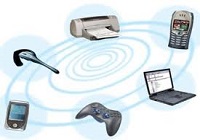As the name itself tells, wireless technology is the technology that includes ways in which the information can be transferred or exchanged over a distance without the use of wires or cables laid underground etc. It is the technology in which the transferring of information is via the medium of air itself with the use of waves at a particular frequency.
The advent of Wireless technology dates back to 1895 when Guglielmo Marconi introduced wireless communication through ‘morse codes’ with the use of electromagnetic waves. Eventually, other supportive and advanced wave bands got used and new technologies started coming up; one of them being the mobiles or cellular technology.
- 0G to 0.5G
The 0G is the pre-cellular technology that dates back to 1970s. In this technology, the cellular mobiles were the cars that used to have the telephonic system for communication mounted over the hood of the car. Later on the size decreased to models of the briefcase apart from the trucks and cars only. The technologies used included PTT (Push to Talk) technology, IMTS or Improved Mobile Telephone System, MTS or the Mobile Telephone System, AMTS or the Advanced Mobile Telephone System, Public Land Mobile Telephony or PLMT, and the OLT or Offentlig Landmobil Telefoni (in Norwegian language) technology.
Same way, 0.5G includes technologies’ group that have improved features as compared to the 0G’s. It is then that this technology started getting used for commercial purposes. This is when the PSTN or the Public Switched Telephone Network came into existence. People started having their own telephone numbers rather than having a network that is closed. The instance of the police radio can be the best example in this generation. Even the taxi dispatch system came into being in this generation.
In these generations the mobile used to be mounted and included the transceiver (transmitter and receiver) that was made attached to the head of the trunk of the vehicle. The head had a dial, handset and display at the driver’s seat or near to it.
- 1G or 1st generation
This generation started in 1980s where the same technology or mobile communication focussed upon having speech service as well. The first cellular or mobile system was introduced and functional in 1979 by Nippon Telephone and Telegraph or NTT located in Tokyo, Japan.
This technology then spread to Europe, with roaming facilities and handover cover-ups. The cover-ups were not successful as much as thought of, hence causing a drawback of call drops and lack of inter operating between different countries in 1G.
- 1982 – Advanced Mobile Phone System or the AMPS got launched in the United States. 40 MHz Bandwidth allocation with frequency range of 800-900 MHz
- 1988 – Federal Communications Commission or the FCC for the AMPS got the allocation of an extra 10 MHz of bandwidth that was called as the Expanded Spectrum or ES. This was in Chicago with an area of service of around 2100 sq miles and AMPS started offering 832 channels along with the data-rate 10 kbps.
- 2.5G – GPRS or the General Packet Radio Service
2.5G or the second and a half generation had technology had packet switch domain alongside the circuit switched. Just because it comes between 2G and 3G, it is termed informally as 2.5G technology by the International Telecommunication University or the ITU.
The GPRS is capable of providing data-rates of 56 kbps to 115 kbps and it can be useful for Wireless Application Protocol or the WAP access, Internet services, Multimedia Messaging Service or MMS, email services and WWW or World Wide Web’s access. This technology was a bit slow as it used the traditional circuits and hence was costly at the same time.
- 2.75 – EDGE or the Enhanced Data rates for GSM Evolution technology
EDGE or EGPRS is a mobile phone technology that is digital and advancement over 2G to 2.5G wherein General Packet Radio Service or GPRS networks are used. This technology supports networks of GSM as well.
Cellular technology’s development over time has been divided into generations ranging from 0G to 5G. It has been since the 1970s that the Mobile Technology has flourished and revolutionised. The generation in the mobiles that we talk about have been on the basis of the technical functionalities they offer.
Click here for government certification in Information Technology





1 Comment. Leave new
I had no idea about the generation of wireless tech. This was informative!